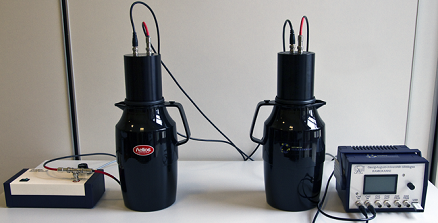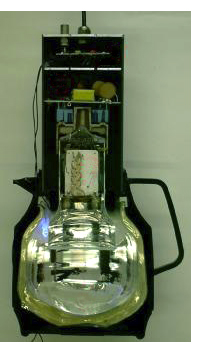URL: https://www.desy.de/school/school_lab/zeuthen_site/cosmic_particles/experiments/kamiokannen_experiment/index_eng.html
Breadcrumb Navigation
Kamiokannen Experiment
Kamiokannen Experiment
Muons in a Thermos Flask
The Kamiokannen-Experiment offers high school and university students an independent study of cosmic particles. It consists of components also used in large experiments, which gives a direct insight into scientific work of astroparticle physics.

The experiment was developed at the University of Mainz. Within the Cosmic Project of the Netzwerk Teilchenwelt, DESY has produced an advanced version using the identical data acquisition (DAQ) card, as well as the steering and analysis program muonic, which is also used in the CosMO-Experiment. DESY and many other astroparticle physics institutes connected through Netzwerk Teilchenwelt provide the Kamiokannen Experiment for student projects in institutes and in schools.
The term “Kamiokanne” is derived from the names of the Japanese Kamiokande Experiment and the German name for can "Kanne". Kamiokande uses the Cherenkov effect in a large water volume surrounded by photomultipliers to detect muons and electrons produced by neutrino interactions. The Kamiokannen Experiment is a miniature version of Kamiokande. A photomultiplier observes a water-filled thermos flask to detect muons produced in the atmosphere. Cosmic muons move at almost the absolute speed of light, however in dielectric median such as air and water they move faster than light in that medium, producing the so-called Cherenkov Radiation. Since these Cherenkov light flashes are very weak, a thermos flask with a mirrored interior wall is used so as not to lose light. A PMT observes the water registering the light flash and transforming the optical signal into an amplified electrical pulse. This pulse will be amplified, filtered and digitised in the DAQ board. Then the board sends a data string with the relevant information to the notebook.




